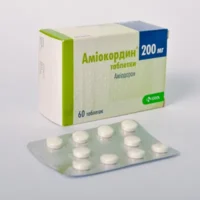Description
Sentor (Losartan) Coated Tablets 100 mg. №30
Ingredients:
- Active ingredient: Losartan potassium 100 mg
- Inactive ingredients: Microcrystalline cellulose, lactose monohydrate, hypromellose, etc.
Dosage:
Adults: The usual starting dose is 50 mg once daily. The dose can be increased to a maximum of 100 mg once daily.
Indications:
Sentor (Losartan) tablets are indicated for the treatment of hypertension and to reduce the risk of stroke in patients with hypertension and left ventricular hypertrophy.
Contraindications:
Do not use Sentor (Losartan) tablets if you are pregnant, have severe liver impairment, or are allergic to Losartan or any other ingredients in the product.
Directions:
Take Sentor (Losartan) tablets exactly as prescribed by your healthcare provider. Do not adjust the dose without consulting your doctor.
Scientific Evidence:
Studies have shown that Losartan, the active ingredient in Sentor tablets, is effective in lowering blood pressure and reducing the risk of cardiovascular events. In a randomized controlled trial published in the New England Journal of Medicine, Losartan was found to be as effective as Atenolol in reducing the risk of stroke, with a lower incidence of side effects.
Additional Information:
Sentor (Losartan) tablets are well-tolerated by most patients but may cause dizziness or lightheadedness. It is important to monitor blood pressure regularly while taking this medication and report any unusual symptoms to your healthcare provider.
It is essential to follow a healthy lifestyle, including a balanced diet and regular exercise, while taking Sentor (Losartan) tablets to maximize the benefits of the medication.





